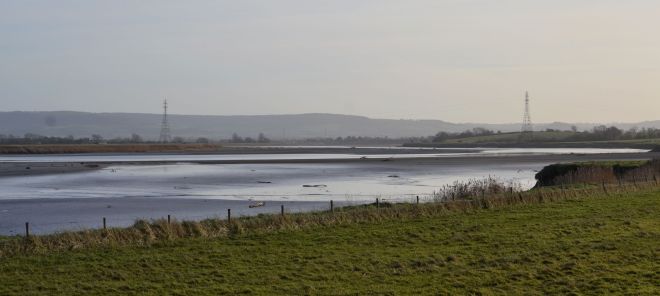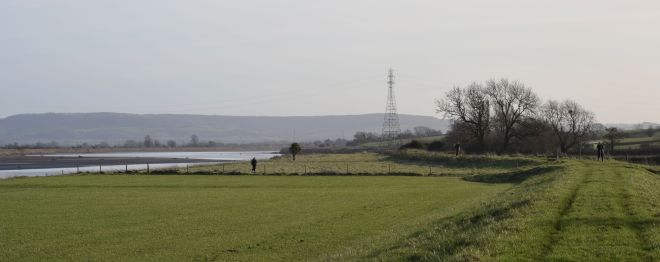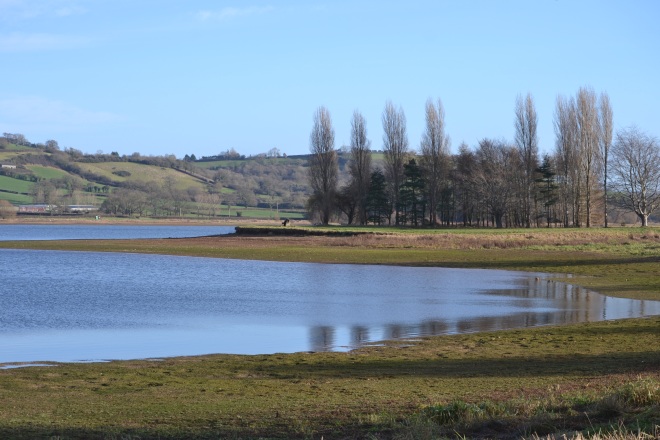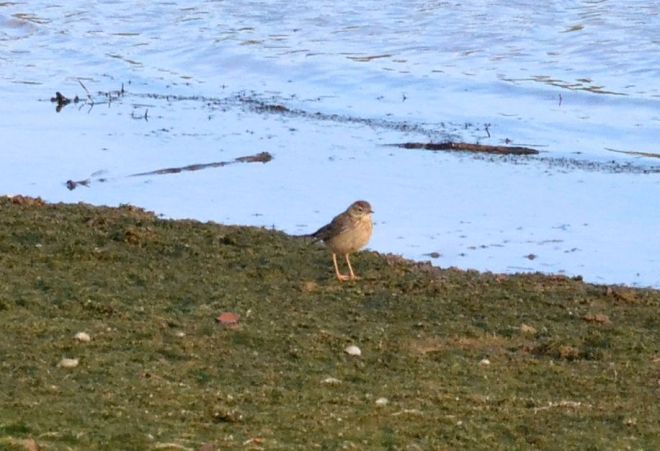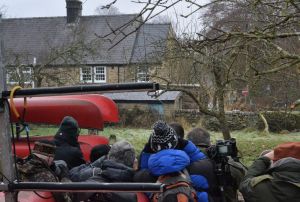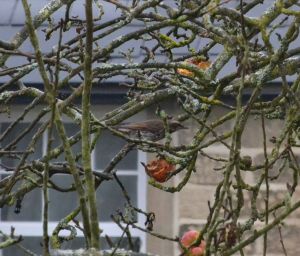Another fine reason arose to be out and about in the frosts of mid-winter when news of this bird broke yesterday from the Cotswold town of Stow-on-the-Wold, Glos. I have encountered Blue Rock Thrush often enough abroad. The national bird of Malta where I commenced my southern Europe travels five years ago, I have also observed the species in Cyprus and Morocco, and several times each in the south of France and Portugal. But more parochial British list additions are always welcome and this one represents bird number 333.
12 months ago an incessant Atlantic weather pattern was dampening my spirits prior to a January escape in the BRT’s home territory. Now the elements have contrived to cater for my choice to endure the British winter this time around, by offering up more cold, clear days of the kind I so enjoy. It was a glorious, frosty daybreak at home in Garsington but on the other side of Oxford there was fog that endured throughout the day. The A40 was closed west of Witney due to a 20 vehicle fatal accident, necessitating a detour through that town. Eventually I arrived in Stow some time before 11:30am.
The pay and display car park closest to the bird was full, with green clad optics carriers coming and going. As I walked from there towards the BRT location people coming back the other way were all content and saying: “It’s showing well,” and such like. As with the Derbyshire Dusky Thrush this occurrence demonstrates how a rarity can remain beneath the radar for some time, in this instance a week before someone with a passing interest puts images on social media and news gets out. Then local residents need to brace themselves for an invasion, prepare the charity buckets and sit tight.
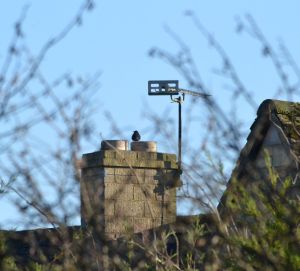
Thar he blows!
On reaching Fisher Close I found a rather modest gathering who were all clearly on the Blue Rock Thrush that was perched obligingly atop a chimney (pictured above). Voila! Apparently there had been around 200 birders crowded into the small cul-de-sac at first light, which must have been a bit of a shock to any late-waking resident who might not have been forewarned. I myself do not feel the need for dawn starts unless there’s a significant advantage in seeing a bird. But I likewise appreciate that getting there early is a matter of form for many birders.
I only needed to tick this BRT for Blighty and thereafter was content for the twitch to turn into a social occasion. There wasn’t long to wait as I looked to my left and found fellow Oxon birder Adam (Hartley), who I would have been surprised not to see here. We chatted for a while then I looked behind and someone else was smiling and waving. Andy? No the Viking beard couldn’t have grown that much since before Christmas. Here were Wayne and Julie (Bull) and before long we were joined by Keith and Shirley (Clack) who I also somehow expected to meet. As we stood around talking these various friends greeted other birders who they knew from here or there: twitching is like that!
All the while the reason for our being present kept coming and going, perching on roof apexes and taller chimneys. It seemed a rather incongruous location for a Thrush that I have always associated with inland or coastal cliff faces in southern Europe. But this bird was treating the environment of it’s adopted resting place in exactly the same way as I had always observed its kind in the past, as I consider the above images show.
This is only the seventh British record of a shy species that normally is seen at distance in its home range and tends to hide itself when disturbed. Today’s BRT was no exception. It behaved just as all those others I have seen abroad did, appearing at height as a silhouette and surveying all before it. But when light caught this male bird in the right way its deep blue colouration and strikingly long bill could be plain to discern. For some quality images see here.

Definitely not a covert Oxon sortie into Glos … just a social gathering
It remains to reflect upon how I seem to have spent some time in Gloucestershire of late. That neighbouring county has hosted Dusky Warbler and Eastern Black Redstart in December 2016, as well as the Richard’s Pipit and Blue Rock Thrush of this journal’s last two entries. All of those are birds I have yet to record in God’s own county (Oxon) where we currently survive on a diet of Bittern, Harriers, Caspian Gull and Tristis Chiffchaff. Whilst appreciating those are all excellent birds to have in a central, land-locked English county, I as always yearn for something new and different. And so far this winter I have not fared too badly a little further afield.






